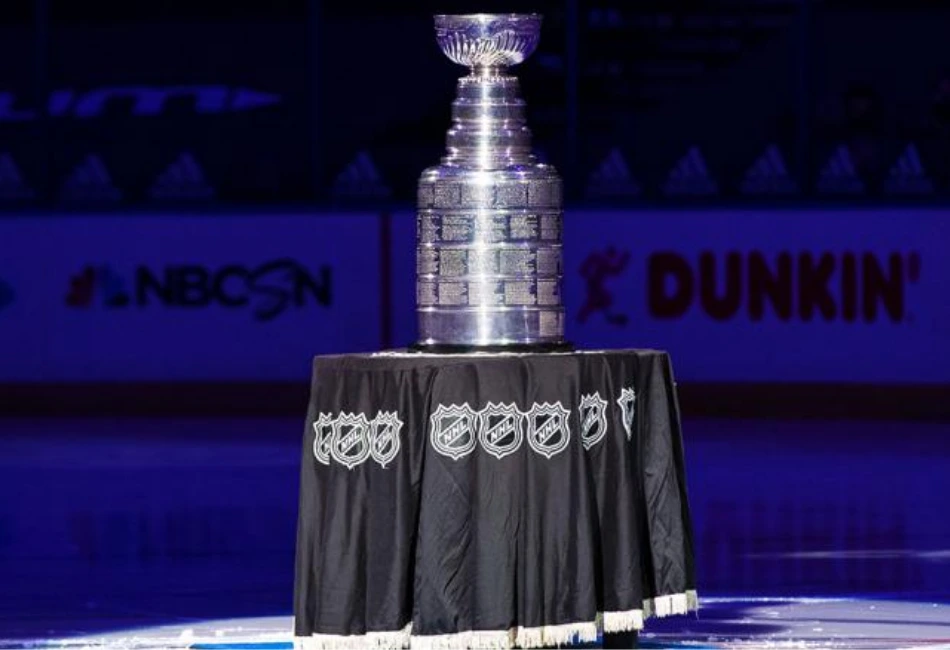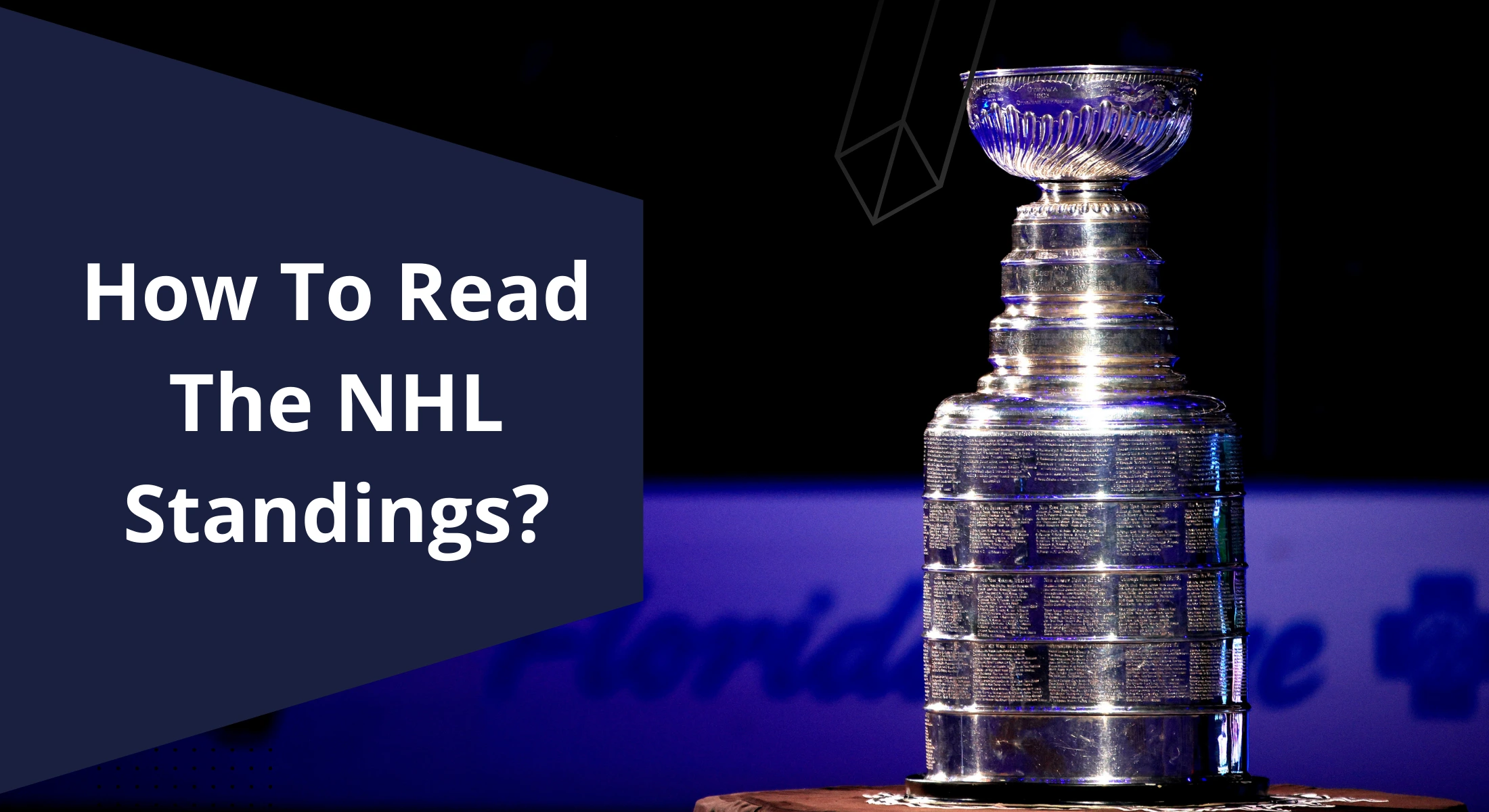If you are a hockey newbie, it might be difficult to figure out where your club is in the National Hockey League rankings and how it got there. But if you get the hang of it, the statistics used in the NHL rankings are rather simple.
So, what are NHL point standings? Wins, defeats, ties, overtime or shootout losses, and points are the most significant stats, known as National Hockey League point standings. The rest of the data are solely useful for breaking ties or examining strengths, weaknesses, and trends.
How to Read NHL Standings?
Standings in a Game
The simplest NHL shorthand is this one. How many games have been played is known as “GP.” The letter “W” denotes the number of victories in such contests. For regular time losses, the letter “L” is used, while for overtime or shootout losses, the letters “OTL” or “OL” are used.
The Current Point Totals
When a team wins, they get 3 points; when they lose, they get 1 point; when they draw, they get 0 points. Ties were discontinued after the 2005–2006 NHL season.
In the scoring system, “Pts” stands for total points, whereas “GF” or “F” shows you how many goals the team has scored. Shootout goals are not included in a team’s overall total. A team that wins a shootout is awarded an additional goal for the game and the season.
The team’s “GA” or “A” is the total number of goals they have conceded. During a shootout, goals surrendered do not count against a team’s overall total. Shootout losses result in an additional goal-against for the losing side and an additional goals-against tally for the whole season.
NHL Playoffs “PCT” stands for the percentage of total points achieved from available points.
Related Post: How to Read Hockey Stats
The NHL Standings are all about: Playoffs, Playoffs, Playoffs
Two conferences, each with two divisions, split the NHL’s 31 clubs. The conference standings determine the playoff schedule. There is just one reason divisional rankings have any bearing on the conference standings: The division leaders are seeded in alphabetical order. Otherwise, the final standings are based on the sum of all individual players’ scores. When a team has equal points, the following factors are used to break the tie, in sequence, until a winner is determined.

What is it with all the names and symbols in the standings?
These hockey stat sheet abbreviations and definitions will enable you to follow along with the game like a pro!
POS: Positions that are possible are C (center), LW (left-wing), RW (right-wing), D (defense), or G (goaltender).
No: Number of Jersey players
GP: Games Played.
G: Goals. To score a goal, a player must contact or have the puck before it reaches the net.
A player’s overall goal tally is not affected by goals scored in shootouts.
A: Assists. To be eligible for an assist, the puck must be touched by at least one other player (no more than two players can receive an assist) before the goal is scored and there must be no defenders involved.
PTS: Points. Goals and assists combined.
+/-: Plus-minus. See the definition of plus and minus.
PIM: Penalty minutes.
PP: Power-play goals.
SH: Short-handed goals(Goals scored with a few seconds to spare.)
GW: Goals that win games.
During a shootout, goals are not counted as game-winning goals, but rather as penalties.
S: Aiming for the goal. It is considered a shot on goal when a player hits the puck with intention of scoring and the goalie prevents the shot from going in.
PCT: The percentage of shots that are taken. The number of goals that are scored is divided by the number of shots that were taken to get that total number of goals.
IGP: Games that are played.
W: Wins. Every time his team scores the game-winning goal, a goalkeeper gets a victory.
L: Losses. Goaltenders who are on the ice when the opposition side clinches a victory are penalized.
SOL Shootout defeats.
GA Goals against. When calculating a goaltender’s goals against, empty-net goals are not included in the totals.
A goaltender’s goals-against total does not include goals scored in shootouts.
SA: Shots against.
GAA: Goals-against average.
S: Saves.
SV PCT: Percentage save.
SO: Shutouts. Both goaltenders share the credit for a shutout if they work together to achieve it.
Related Post: What is a Good Save Percentage in Hockey?
How to calculate the points for a team record?
In the NHL today, there are numerous problems, but the points system is the only one that can be easily fixed. To ensure that no other National Hockey League, club misses out on a playoff position, a change must be made to the NHL’s playoff system as soon as possible, regardless of the system it selects in the future.
According to the NHL Standings, there are more than only the team’s W-L-OT record or Shootout loss record (W-L-OT). Only a few directly impact the team’s standings. For those who have an impact on the standings, I will describe the process in detail. And I shall make a point of pointing out those who do not.
This you will be able to learn in detail about understanding the calculation of NHL standings. So, you can understand who comes out on top of a tie-in point in terms of standings?
P% – Percentage of points
All games are divided by their total available points to get a percentage of how many points are scored in each game (2 pts per game).
For example, if the Montreal Canadiens have 22 points after 19 games, the proportion of points is as follows:
Points Earned / Games Played x 2 = Points Percentage (P%)
22 PTS / 19 GP x 2 = 0.579 P% for the Canadiens
Related Post: How many calories does a hockey player burn?
Who is in the playoffs and who is not?
Again, 16 of the 31 clubs who qualified for the playoffs are left. There are 8 playoff berths available in each conference, and the top 3 clubs in each division compete for the first 6 of those positions. Wild cards occupy the final two positions and are awarded to the conference’s top three-point scorers outside of each division.
The NHL clubs are often displayed in one of four ways on a standings table: as part of a League, Conference, Division, or as Wild Card candidates. The Wild Card edition of the playoffs is the most critical in determining which teams make the playoffs and which don’t.
1. League: If you’re looking for a league table of all the NHL clubs, this is the one. It has no impact on playoff seeding, but it can help determine where teams should be drafted in the NHL draught.
2. Conference: Eastern and Western clubs are separated into their conferences. You have to gain a victory over your conference opponents to get there for having the edge. However, this version of the standings does not reveal who you would face if the postseason commenced right now.
3. Division: NHL teams are divided into four groups:
⦁ Metropolitan
⦁ Pacific
⦁ Central
⦁ Atlantic
Each division champion receives one of the conference’s two best seeds in the playoffs.
4. Wild card: Here, the division and conference standings are combined into a single picture of the Wild Card standings. As a result, the rest of the league is grouped into divisions and competes for the remaining playoff positions. The two-division champions will face the top two wild-card finishers in the playoffs.
Now we will look at the final standings of the Eastern Conference and Western Conference for 2021-2022 to learn how to read them clearly:




- There are three sections to every conference. It is divided into two divisions, with only the top three clubs in each division participating. The remainder of the conference’s clubs who did not finish in the top three of their respective divisions were given a Wild Card.
- The champions of each division will face a wild card club in the championship game. In the first session of the playoffs, the division’s second and third-place clubs will confront.
- The wild card with the fewest points from each division will face the winner of that division’s championship game. For the Wild Card winners, it is all about the remaining 10 clubs in the conference who did not finish in the top three divisions.
Frequently Asked Questions
In which manner do NHL statistics work?
Is it legal to wear the number 69 in the NHL?
In hockey, what is the term for scoring four goals?
Conclusion: What are NHL Point Standings?
I hope that now the NHL standings are at your fingertips! It is important to keep track of the standings as you follow your club throughout the season, as they are always shifting. There is no telling how quickly a team’s fortunes may change depending on whether they are winning or losing. A season of NHL hockey can be an exhilarating and compelling experience for its fans. Now enjoy your NHL season!


